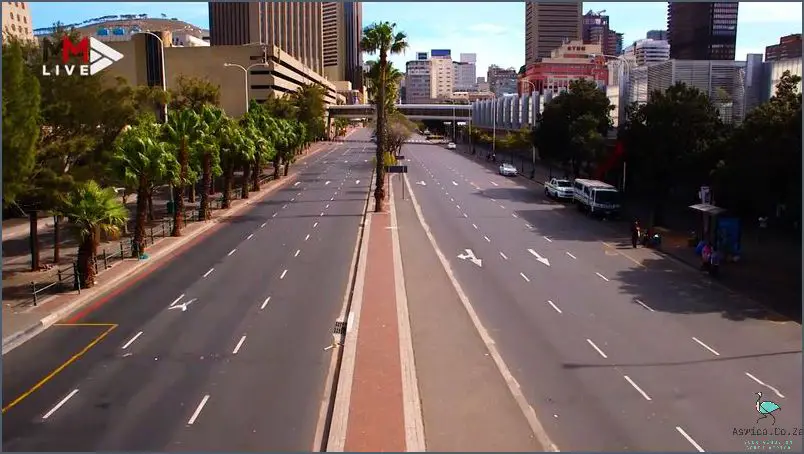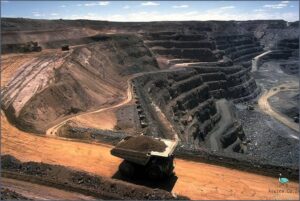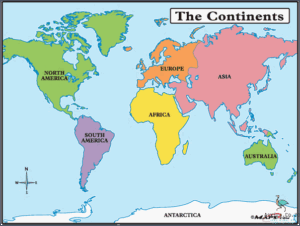
Mineral Map Of South Africa is a map that shows the mineral resources located in South Africa. It is a very useful tool for geologists, miners, and researchers to assess the potential of mineral resources in the country. The map includes information on the geographic distribution of mineral occurrences, deposits, and resources, as well as the names of mines and mining companies active in South Africa. It also provides insight into the geological history of the region and helps in the prediction of future mineral discoveries. The map also helps government and industry to monitor the progress of mining activities and to ensure that mineral resources are used responsibly. Mineral Map Of South Africa is an invaluable resource for anyone interested in the geological and mineral wealth of South Africa.
Contents
Mineral Map Of South Africa
South Africa is a country rich in minerals. It has a wide variety of mineral deposits, including diamonds, gold, iron ore, coal, manganese, and chromium. The country is home to some of the largest mines in the world and its mineral resources are used by many countries in the world. The South African Geological Survey has put together a detailed mineral map of the country to show the location and type of minerals that can be found in different parts of the country. The map is divided into provinces and shows which minerals are found in each province. It also shows the concentration of each mineral, its estimated economic value, and the distance to the nearest city. The mineral map of South Africa helps to identify potential areas for mineral exploration and can be used to inform decisions on resource development.
Types of minerals found in South Africa
South Africa is home to an abundance of minerals and natural resources, making it one of the richest countries in the world in terms of mineral wealth. The country is estimated to have the world’s fifth-largest mining sector, and minerals account for a significant portion of its exports. South Africa is a major producer of a wide range of minerals, including precious metals, base metals, and industrial minerals. Here is a look at the various types of minerals found in South Africa and how they are used.
Precious Metals
South Africa is home to a variety of precious metals, including gold, platinum, silver, palladium, and rhodium. These metals have been mined for centuries and are highly sought after for their rarity and beauty. Gold is one of the most important minerals that South Africa produces, with annual production estimated to be at around 140 tons. Platinum is another precious metal produced in South Africa, with the country being the second-largest producer of platinum in the world.
Base Metals
The base metals found in South Africa include copper, iron ore, zinc, lead, and manganese. Copper is the most abundant base metal in South Africa, with the Witwatersrand Basin being the largest copper-producing region in the country. Iron ore is also a major base metal produced in South Africa, with the country being the sixth-largest producer of iron ore in the world.
Industrial Minerals

South Africa is a major producer of industrial minerals, including diamonds, fluorspar, andalusite, chromite, and vanadium. Diamonds are one of the most important minerals produced in South Africa, with the country being the third-largest producer of diamonds in the world. Fluorspar is also mined in South Africa, with the country being the fourth-largest producer of fluorspar in the world. Andalusite is another industrial mineral produced in South Africa, with the country being the leading producer of andalusite in the world.
These are just some of the minerals found in South Africa. The country is home to a wide variety of minerals and natural resources, with many of them being used to power the country’s economy. South Africa’s mineral map is a testament to the country’s abundance of mineral wealth and its importance in the global economy.
Locations of major mineral deposits in South Africa
South Africa is a land of diverse and abundant mineral deposits. The country is one of the most mineral-rich nations in the world, boasting an impressive variety of mineral resources. South Africa is home to some of the most spectacular and valuable mineral deposits in the world, including diamonds, gold, platinum, copper, iron ore, manganese, coal and uranium.
The country is also home to a number of major mineral deposits, which are concentrated in certain regions of the country. These deposits include gold, platinum, iron ore, coal, uranium, and other minerals. The major locations of these deposits are discussed below.
The Witwatersrand Basin is one of the most significant mineral deposits in South Africa. It is located in the Gauteng Province, and is home to some of the world’s largest gold and uranium deposits. The basin also contains large quantities of other minerals, including iron ore, manganese, and coal.
The Orange River, which runs through the Northern Cape, is another major mineral deposit in South Africa. The Orange River deposits are known for their large deposits of diamonds, gold, and other precious stones. These deposits are located along the banks of the river and in the surrounding area.
The Limpopo Province is home to one of the largest diamond deposits in the world. The Limpopo deposit is composed of a variety of minerals, including diamonds, gold, and platinum. The Limpopo deposit is also known for its high-grade iron ore.
The Bushveld Complex is another major mineral deposit in South Africa. The complex is located in the Limpopo Province and is known for its high-grade platinum and chrome deposits. The Bushveld Complex is also home to large deposits of iron ore, coal, and other minerals.
The Kalahari Basin is located in the Northern Cape, and is home to some of the world’s largest diamond deposits. The Kalahari Basin is known for its large deposits of gold, platinum, and other precious stones.

The KwaZulu-Natal Province is home to one of the largest coal deposits in the world. The KwaZulu-Natal coal deposits are located in the northern part of the province and are known for their high-grade coal.
Finally, the West Coast of South Africa is home to some of the world’s largest deposits of gold, copper, and other minerals. The West Coast is also known for its large manganese deposits.
As you can see, South Africa is a land of abundant mineral resources. The country is home to some of the most spectacular and valuable mineral deposits in the world. Whether you are looking for gold, diamonds, platinum, coal, uranium, iron ore, or other minerals, South Africa is the place to be.
Challenges with mineral extraction in South Africa
South Africa is renowned for its abundant mineral resources, but extracting these minerals can be a challenging process. The country is home to some of the world’s largest deposits of gold, platinum, diamonds, and other precious metals, but extracting these resources often requires expensive, complex equipment and processes. In addition, the country is subject to frequent seismic activity, which can make mineral extraction difficult and dangerous.
The country’s topography also presents challenges for mineral extraction. South Africa’s landscape is diverse, ranging from flat coastal plains to hilly highlands and mountainous ranges. This variety of terrain can make it difficult to access mineral deposits and can increase the risk of accidents when equipment is in use.
The cost of mineral extraction can be prohibitive in South Africa. The country has some of the world’s highest labor costs, and it can be difficult for small-scale operations to compete with larger companies. For example, gold mining in South Africa is dominated by large corporations, and many small-scale miners struggle to make a profit due to the high cost of labor and equipment.
Environmental regulations in South Africa can also make mineral extraction difficult. The country’s strict environmental rules and regulations can make it difficult and expensive to obtain the necessary permits and permissions. In addition, environmental regulations can limit the amount of land that can be used for mineral extraction, which can reduce the potential profits of small-scale operations.
Despite these challenges, South Africa remains a major producer of minerals, including gold, platinum, and diamonds. The country’s mineral wealth has been an important part of its economy for centuries, and with the right technology and processes, it is possible to extract minerals safely and efficiently. With the right investments and partnerships, South Africa can continue to be a leader in mineral extraction, providing valuable resources to the world.
Conclusion
Based on the Mineral Map of South Africa, it can be concluded that South Africa has a wide variety of mineral resources. The map indicates that the country has large deposits of gold, diamonds, platinum, chromium, coal, iron ore, uranium, and other minerals. These minerals are of great economic importance to the country and have helped to drive its economic growth over the years. South Africa is also a major producer of minerals for export, which has further bolstered its economy. Additionally, the mineral resources are distributed across the country and the map provides a detailed picture of their locations. This could be of great help to those looking to explore and exploit the country’s mineral resources.



